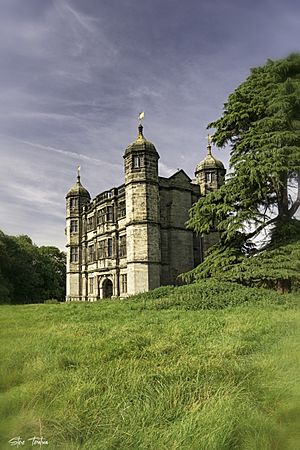Dominique Bourgoing facts for kids
Dominique Bourgoing (died 1589) was a French doctor who worked for Mary, Queen of Scots. He is known for writing an important diary about Mary's time in prison and her final days.
A Royal Doctor

Dominique Bourgoing studied medicine in Paris. He wrote papers on topics like lung health and how poisons affect people. He became a qualified doctor in 1577. By 1580, he was working for the French king, Henry III of France.
From 1580, Bourgoing was part of Mary, Queen of Scots' household in England. He took over from other doctors who had worked for Mary before. Mary also had other medical helpers, like surgeons and pharmacists. Bourgoing often sent updates on Mary's health to Michel de Castelnau, who was the French ambassador in London.
In March 1580, Mary wrote about her son James having an upset stomach. She talked about it with Bourgoing. She remembered that when she was a child, another doctor had treated her for the same problem. Mary suggested that James eat special nuts and nutmeg, and wear ivory on his stomach.
On August 11, 1586, Mary was arrested while riding near Chartley Castle. Bourgoing was with her and other members of her household. Armed soldiers surprised them and took them to Tixall.
Some stories say that before Mary's execution, Bourgoing encouraged her to have some wine and bread. In March 1587, after Mary's death, Bourgoing and Andrew Melville wrote to Amias Paulet. They discussed getting their money back and returning to France.
Medical Supplies
After Mary's death, a list was made of all her belongings. Bourgoing had several medical items with him. These included a small gold bottle with a special stone inside, used for stomach pains. He also had a silver bottle with another stone, used as a remedy for poison.
Mary kept other valuable items for health in her special cabinet room. These included a stone to help with sadness. She also had small bags of powdered coral, pearl, and a special medicinal clay. This clay was thought to be an antidote to poison.
The clay and a piece of what was believed to be unicorn horn were sent from France. These were sent by Mary's friend, the Archbishop of Glasgow. John Lesley, the Bishop of Ross, sent cinnamon water. The French diplomat Bertrand de Salignac de la Mothe-Fénelon sent special nutmegs, a medicine called mithridate, and an ointment. Mary used this ointment for a recurring pain in her right side and arm. This pain sometimes made it hard for her to write.
Writing About Mary
Bourgoing kept a diary of Mary's last days, starting on August 11, 1586. A copy of his diary was published in 1876 by Régis Chantelauze.
- Regis Chantelauze, Marie Stuart : son proces et son execution, d'apres le journal inedit de Bourgoing son medecin (Paris, 1876), pp. 466-578
English versions of the diary were later published by Mary Monica Maxwell-Scott and Samuel Cowan.
Bourgoing's diary about Mary's death was used by a writer named Adam Blackwood. Blackwood wrote a book in 1588 called La mort de la royne d'Escosse. In this book, Blackwood wrote that Mary asked Bourgoing to take her heart to France.
The diary mentions many names and places that are not found elsewhere in records about Mary's travels. For example, it shows that she stayed at an inn in Leicester called the Angel. Bourgoing's diary also includes Mary's own words and speeches from her trial and before her death.

